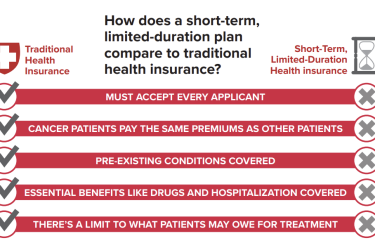
Oklahoma Watch, a nonprofit investigative journalism team, recently published a two-part series on hospitals based on financial data obtained for every hospital in the state. As reporter Clifton Adcock writes in an article for AHCJ, the series revealed that between half and three-fourths of small general hospitals in Oklahoma were losing money, and that hospitals had spent only small fractions of their net patient revenues on charity care.
Hospitals get “disproportionate-share” (DSH) payments from the federal government to help cover costs for treating the indigent. Because Oklahoma was not expanding Medicaid under the Affordable Care Act, hospital groups said they expected to take a big financial hit from the law’s cuts to DSH payments. Oklahoma Watch wanted to see how much they relied on such payments.
Amounts of charity care, bad debt and overall uncompensated care are recorded by each hospital over several years. The reporters wondered how heavy a burden the hospitals bore for treating the uninsured and not having all of their costs covered by Medicare and Medicaid.
The reporters learned that most Oklahoma hospitals would not be suffering significant cuts in DSH payments, at least initially, because the cuts were delayed by the Obama administration and Oklahoma was drawing a relatively low share of such payments. They also found several key trends and spotted other potential stories in the data.
Adcock, who worked on the project with theTulsa World‘s investigative editor and reporter Ziva Branstetter, explains how they got the data, with some specific tips on how to find alternative sources for data when government officials are uncooperative and how to make sense of daunting hospital cost reports. Read the latest “How I did it” story.







